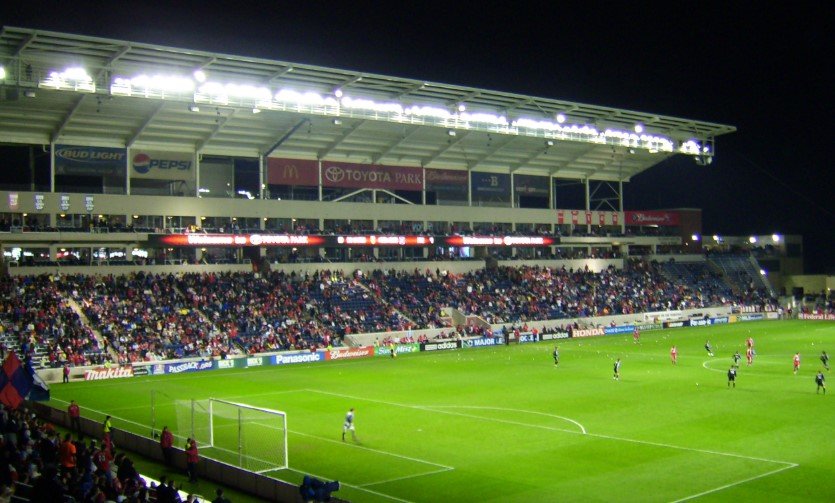The Chicago Fire just unveiled plans for their long-awaited soccer-specific stadium — and it’s everything fans were hoping for. Think grit, history, and a whole lot of heart.
Designed by the architecture firm Gensler, the 22,000-seat arena is more than a home pitch. It’s a brick-and-steel tribute to Chicago’s architectural legacy, set right along the river in a city that takes its buildings very seriously. Privately funded, the $650 million project is expected to break ground by early 2026, aiming to open for the 2028 MLS season.
A Stadium Built Like It Belongs
You won’t mistake this one for a spaceship or a soulless glass box. This thing’s got Chicago’s fingerprints all over it.
Lead architect Kirk Funkhouser of Gensler says the vision was to make something that feels like it’s been standing downtown for generations. “The ownership and team wanted to create a building that had a timeless look,” he said. “To respect Chicago’s architectural past.”
It shows. Picture an outer shell of red brick, dark industrial windows, and thick black steel beams. The exterior channels the feel of old warehouses and the nearby steel bridges that crisscross the river. It’s a love letter to a city that’s not afraid to wear a little soot.
Inside? That’s where things crank up a notch. There’s a steeply pitched supporters’ section, designed to keep the energy high and the sound even higher. And seats? Oh, there’s a lot of variety. Premium lounges, club seats, family sections — something for everyone, really.

The Fire’s Nomadic Past Is Finally Settling Down
The Chicago Fire have bounced around like a touring rock band since their founding. And fans haven’t exactly loved it.
Here’s a quick rundown of the team’s home field history:
-
1998–2001: Soldier Field
-
2002–2003: Cardinal Stadium (Naperville)
-
2004–2005: Back to Soldier Field
-
2006–2019: SeatGeek Stadium in Bridgeview
-
2020–Now: Soldier Field again
That’s five moves in less than 30 years. Not ideal.
Now, with a permanent home finally in the works — and in a prime urban spot — the Fire are planting roots in a way that fans can truly rally around. No more half-empty suburban stadiums. No more playing guest in someone else’s football palace.
What Fans Can Expect Inside
The stadium isn’t just aiming to look good on the outside. The inside is being designed with fans front of mind — especially the die-hards.
The steep supporters’ section? That’s key. It’s all about creating noise, pressure, and atmosphere that travels right down to the pitch.
Beyond that, there’s a real focus on giving people seating options that fit their vibe (and wallet). From basic bleachers to field-level suites, this place has layers. Here’s what’s in the mix:
-
A supporter stand built for volume and energy
-
General admission and family-friendly areas
-
Club and suite levels with premium amenities
-
Open concourses with views of the field and skyline
There’s even talk of integrating local food vendors into the matchday experience. Think more hot giardiniera and less overpriced generic nachos.
Construction Timeline and Development Plans
The project isn’t just about soccer. It’s the anchor of a much larger mixed-use development downtown — a key selling point for both the city and developers.
Construction is expected to begin in early 2026. Barring any major delays, the new stadium should be ready to host the Fire for the 2028 MLS season.
Let’s break it down with some numbers:
| Project Detail | Estimate |
|---|---|
| Stadium Capacity | 22,000 seats |
| Estimated Cost | $650 million |
| Funding Source | Fully privately funded |
| Construction Start | Early 2026 |
| Target Opening Season | MLS 2028 |
It’s a bold bet on the long-term health of MLS — and on the Fire’s role in growing the league’s footprint in a huge media market.
Gensler’s Signature and the City’s Soul
Gensler’s no stranger to high-profile stadiums, but there’s something different about this one. Maybe it’s the restraint.
Funkhouser isn’t going flashy. He’s going familiar. “We want fans to feel like it’s been their stadium for decades,” he says.
That explains the material palette — brick, steel, and warehouse glass. That explains the effort to connect visually with the city’s famous river bridges. That explains the steep supporter wall, which practically demands fans stand and chant for 90 minutes.
One paragraph here says it all.
The goal isn’t just aesthetics. It’s memory-making.
It’s the kind of stadium where you remember where you were when the Fire won something big. Where you walk in and feel at home, even if it’s your first time through the gate.








